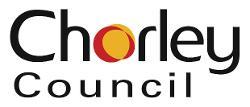Community Infrastructure Levy (CIL) and Parish Councils
How CIL is allocated to parish councils
Under the CIL regulations, we are required to pay to parish councils 15% to 25% of any CIL receipts from developments within those areas.
We pass accumulated funds to the parish council every 6 months:
- CIL receipts received by the council between 1 April to 30 September, are to be paid to parish councils by 28 October.
- CIL receipts received by the council between 1 October to 31 March, are to be paid to parish councils by 28 April.
How the Parish Council funds must be spent
As per the CIL guidance on the planning guidance website: "What can neighbourhood funding be spent on?" it states that;
"The neighbourhood portion of the levy can be spent on a wider range of things than the rest of the levy, provided that it meets the requirement to 'support the development of the area' (as per Regulation 59c). The wider definition means that the neighbourhood portion can be spent on things other than infrastructure (as defined in the Community Infrastructure Levy regulations) provided it is concerned with addressing the demands that development places on the parish's area. For example, the pot could be used to fund affordable housing.
Parish or town councils should discuss their priorities with the charging authority during the process of setting the levy rate(s) (this includes amendments to levy rates).
Once the levy is in place, parish or town councils should work closely with their neighbouring councils and the charging authority to agree on infrastructure spending priorities. If the parish or town council shares the priorities of the charging authority, they may agree that the charging authority should retain the neighbourhood funding to spend on that infrastructure. It may be that this infrastructure (for example, a school) is not in the parish or town council's administrative area but will support the development of the area."
If a parish council has failed to spend CIL funds passed to it within 5 years of receipt or has applied the funds not in accordance with the regulations, then we can serve a notice on the parish council requiring it to repay some or all the receipts passed. We will be required to spend any recovered funds in the parish council's area.
CIL infrastructure projects
It is important to note that we (as the CIL collecting and enforcement authority) cannot say or advise which projects selected by a parish council would be acceptable, as the legislation is subjective rather than prescriptive.
Parish council's need to ensure that they can confirm and evidence as best they can that the project, items and infrastructure proposed can meet the definitions in the main. It is the case that the parameters under CIL Regulation 59c for parish spend should be proven for any project.
Contact your parish council for details of spend within your local area.
Parish council reporting requirements
Parish councils are required by the Community Infrastructure Levy Regulations 2010 (as amended) to publish their total CIL receipts.
These reports, as detailed under Regulation 121B, must include:
- CIL income received
- total CIL expenditure
- a summary of what the CIL was spent on
- the amount of receipts retained at the end of the reported year from that year and previous years.
These reports can be combined with other reports already produced by the parish councils, but differentiation must be clear with regards to CIL income and expenditure, and other parish council income and expenditure.
Parish Councils must publish CIL annual reports on their website, by no later than 31 December following the end of the reported year.




